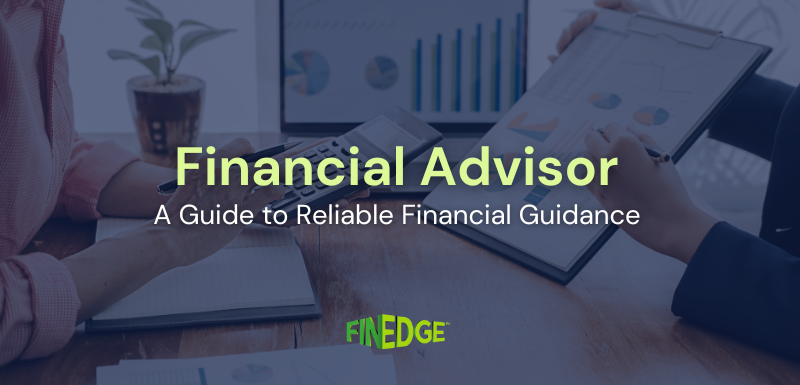How to Select the Best Financial Advisor: A Professional Step-by-Step Guide
- Learn how to identify the best financial advisor for your unique goals and risk profile.
- Understand the importance of fee transparency and process-driven advice.
- Discover key factors that differentiate professional advisors from product sellers.
- Follow a structured approach to evaluate credibility, alignment, and long-term fit.
Selecting the right financial advisor goes beyond credentials or returns, it’s about finding a partner who understands your goals, values transparency, and guides you with objectivity and discipline.
Choosing the best financial advisor is one of the most consequential financial decisions you will make. The right advisor can help you build wealth, navigate complex financial situations, and avoid common behavioral pitfalls. Yet, with so many individuals and institutions calling themselves “financial advisors,” it is essential to distinguish between those who are truly fiduciary, process-oriented professionals and those whose approach is primarily transactional.
This guide outlines a structured approach to identifying, evaluating, and selecting an advisor who genuinely aligns with your interests and goals.
1. Begin by Defining the Scope of Advice You Require
Clarity on your needs is the first step toward finding the right advisor.
Determine whether you are looking for comprehensive financial planning, covering cash flows, tax optimization, insurance, and long-term goal setting, or primarily for investment management and portfolio construction.
Understanding the scope of work helps you identify advisors with relevant experience and ensures the engagement begins with shared expectations.
2. Assess Transparency in Compensation and Potential Conflicts
A hallmark of the best financial advisors is complete transparency about how they are compensated. During your initial discussions, ask precise questions about their fee model:
-
Do they charge a fixed or percentage-based fee?
-
Are they remunerated by third-party product providers?
-
What services are included in the quoted fee?
An advisor who hesitates to clarify their compensation structure or downplays the topic altogether may not be aligned with your interests. A transparent model reflects integrity and client centricity.
3. Evaluate the Advisor’s Process and Philosophy
The difference between a sales-oriented representative and a true advisor often lies in process discipline. The best advisors follow a documented, repeatable process, one that prioritises financial planning, goal linkage, and periodic review.
Request an overview of their approach to risk profiling, asset allocation, and portfolio review. An advisor who can explain how and why decisions are made demonstrates a deeper commitment to methodical, research-driven investing.
4. Examine the Level of Customization and Goal Alignment
No two investors share identical financial circumstances, risk appetites, or aspirations.
The best financial advisor recognizes this and avoids generic advice. They begin by understanding your financial goals, timelines, and behavioral tendencies before recommending solutions.
Ask how the advisor ensures recommendations remain relevant as your life circumstances evolve. A professional who revisits and recalibrates strategies periodically adds long-term value through adaptability.
5. Observe Communication Style and Behavioral Guidance
Investment outcomes are often determined less by market performance and more by investor behavior. The best financial advisors recognize this and serve as behavioral coaches, helping clients remain disciplined through volatility.
Assess how the advisor communicates complex ideas. Clear, jargon-free explanations reflect a genuine intent to educate rather than impress. Frequent, structured reviews and proactive communication during market turbulence are signs of professionalism.
6. Verify Professional Credentials and Governance Framework
Before finalizing an engagement, confirm the advisor’s professional qualifications and regulatory compliance.
A SEBI registration (for Indian investors), relevant certifications in financial planning, and an established governance framework indicate both credibility and accountability.
Equally important is the service model, understand whether you will work directly with the principal advisor or a team. Firms that emphasize collaborative review and transparent documentation generally deliver more consistent outcomes.
7. Review the Engagement Terms Thoroughly
The formal engagement letter or proposal should clearly outline:
-
Fees and inclusions
-
Deliverables and timelines
-
Termination and data protection clauses
-
Disclosure of potential conflicts
Avoid relationships without formal documentation or where key details are conveyed verbally. Written agreements protect both parties and set the foundation for a professional, enduring relationship.
Conclusion
Selecting the best financial advisor is not a matter of finding the most persuasive or the most optimistic one — it is about identifying integrity, structure, and long-term alignment.
An advisor who invests time in understanding your goals, communicates transparently, and adheres to a disciplined process will likely add far greater value than one who focuses solely on returns.
Financial advice, at its core, is about trust and process. Choose the person or firm whose philosophy resonates with your own, and whose actions demonstrate that your interests truly come first.
FAQs
Your Investing Experts
Continue Reading
Can AI Replace Financial Advisors? What Investors Should Really Expect
The rapid growth of AI in financial services has made many investors wonder whether AI can replace financial advisors. AI brings speed, automation, and powerful analytical capabilities, but meaningful financial planning requires far more than data. Investors need guidance that adapts to life changes, supports decision-making during uncertainty, and connects financial choices to long-term goals. That level of interpretation and behavioural understanding remains uniquely human, making the future of wealth management a blend of technology and human expertise.
How to Select the Best Financial Advisor: A Professional Step-by-Step Guide
Selecting the right financial advisor goes beyond credentials or returns, it’s about finding a partner who understands your goals, values transparency, and guides you with objectivity and discipline.
5 Signs that your 'Advisor' is really a Salesperson
Read this blog to know five common tell-tale signs that you’re dealing with a salesperson and not a Financial Advisor. To know more, Visit us Now!
.png)


